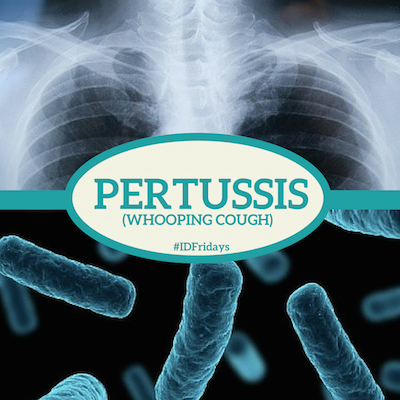Pertussis (whooping cough) is a dangerous bacterial infection caused by Bordetella pertussis. Pertussis typically begins with cold-like symptoms, such as a slight cough or fever. Severe coughing fits can start after 1 to 2 weeks and linger for 3 to 8 weeks. Coughing can be so intense that it makes it difficult to eat, drink, or breathe. Coughing fits are frequently followed by vomiting. A pertussis epidemic raced through the United States in the early 1900s. The death rate was 10% for all ages and up to 36% for children under the age of two. Vaccines were created in the 1930s, with the first being administered to children in Cincinnati in 1941. By 1958, there were enough vaccinations to allow for baby immunization across the country.
Causes of Pertussis
There has been a significant increase in pertussis cases affecting all age groups. In fact, according to the Centers for Disease Control and Prevention (CDC), pertussis is known as a 100-day cough because it can last for months. In addition, there have been some severe complications from this disease. For example, one infant died from respiratory failure after contracting whooping cough from his mother during pregnancy. Another child with pertussis had to be placed on life support due to neurological complications. The cause of pertussis is the bacterium Bordetella Pertussis. The infectious agent is a coccobacillus Gram-negative, pleomorphic, aerobic rod. It grows on blood agar at 25 degrees C in 2 to 3 days.
Symptoms of pertussis
Pertussis is a highly contagious, severe respiratory infection caused by the bacteria Bordetella pertussis. Catarrhal symptoms such as a runny nose, sneezing, and low-grade fever are common in the early stages of the disease. It manifests as an acute cough in its second stage, which can result in vomiting or rib fractures from violent coughing fits. Throughout history, pertussis has been observed. Pertussis symptoms might be moderate, but in certain situations, it can lead to major complications and death.
Treatment for Pertussis
The disease attacks the respiratory system and is especially dangerous for infants. Antibiotics are the best way to treat pertussis, but they can also be treated with another drug called erythromycin. When you’ve prescribed an antibiotic for a bacterial infection, it’s important to remember to take the entire course. Stopping treatment too soon or taking antibiotics incorrectly can lead to antibiotic resistance and make it much harder to treat infections in the future.
Prevention of Pertussis
The American Academy of Pediatrics (AAP) and the Centers for Disease Control and Prevention (CDC) suggest that all newborns receive their first dose of pertussis vaccine when they are two months old or older. Infants under the age of two months should not be vaccinated, but they must begin their immunization program when they reach the age of two months. Infants and toddlers should receive a total of 5 doses: four doses of DTaP, commonly given at the ages of two, four, six, and fifteen to eighteen. Over 41,000 cases of pertussis were reported in the United States in 2016. States have begun enacting laws to make pertussis immunizations mandatory for school entry to limit transmission and reduce outbreaks.
In conclusion
Pertussis is a potentially lethal disease. Vaccination is the most effective strategy to prevent it. If you or your kid develop cold-like symptoms such as a runny nose or a moderate cough, consult your doctor for testing and treatment options. This article discusses pertussis in-depth, including its causes, symptoms, treatment choices, and preventative suggestions.








